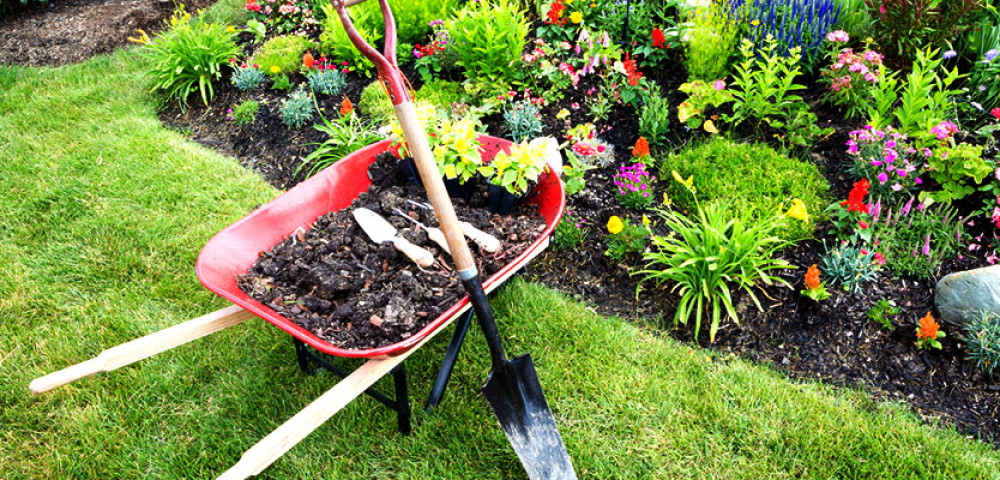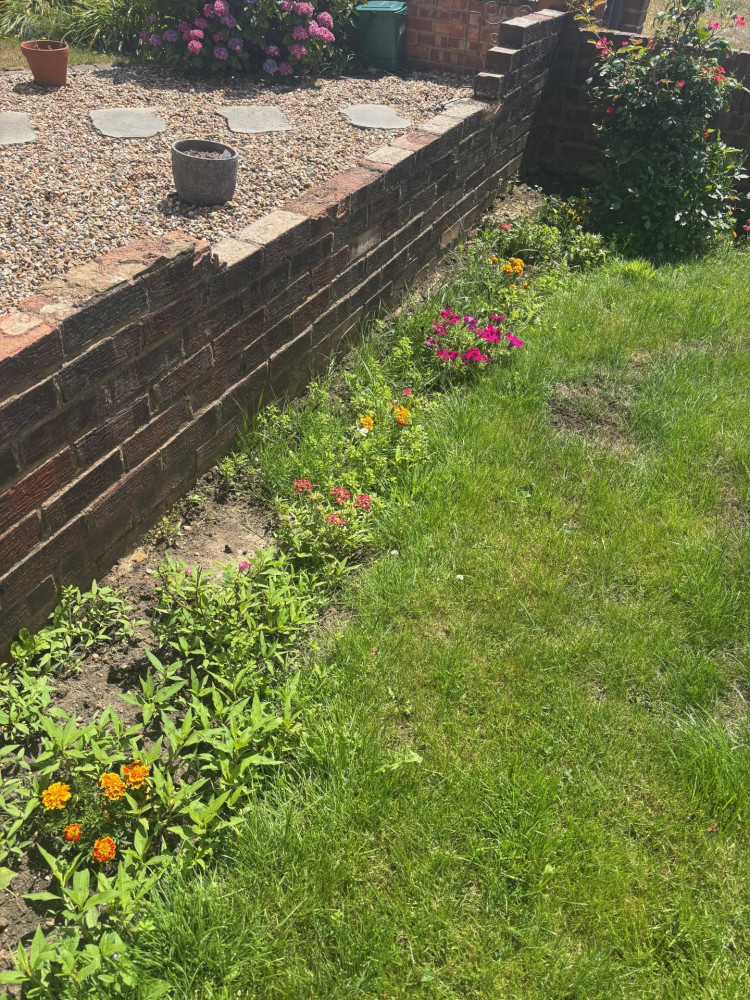Work smart with bark and make your beds and borders easier to manage

Garden Borders That Stay Neat With Less Weeding
Keeping garden borders looking tidy is a task many gardeners struggle with, especially when it comes to weed control.
These areas can quickly turn into high-maintenance zones without the right planning. While pulling weeds seems like the most straightforward approach, it often leads to short-term results and long-term frustration.

With a thoughtful strategy, however, you can design borders that look good and require far less weeding.
Creating effective borders involves more than simply planting flowers or shrubs.
The right materials and preparation techniques can make a huge difference, helping you maintain an attractive garden without constantly fighting unwanted growth.
How Bark Mulch Helps Tidy Up Borders
One of the most widely used solutions for weed control in garden borders is bark mulch. Applied as a surface layer, this organic material blocks light from reaching weed seeds, reducing their chances of germinating. It also lets moisture pass through to the soil, helping your plants thrive while keeping weeds down.
Compared with options like grass clippings or straw that break down quickly, bark mulch lasts longer and offers more benefits. It gradually decomposes, feeding the soil and improving its structure. This supports microbial life beneath the surface, unlike synthetic alternatives such as plastic sheeting that provide no nutrients and can actually damage soil quality over time.
A neatly mulched border also enhances the visual appeal of a garden. The dark, uniform surface provides a clean backdrop that lets flowering plants stand out. In addition to weed suppression, bark mulch helps retain moisture, meaning less watering is required during hot or dry periods.

One particularly effective option is composted bark for improved soil health. This mulch not only keeps weeds at bay but also supports long-term soil vitality. Its fine texture makes it suitable for formal and informal garden styles alike, while offering a balance between durability and biodegradability.
What Makes Garden Borders Prone to Weeds
Borders often become weed-prone because they are disturbed regularly.
Digging, planting, and general maintenance all bring hidden weed seeds to the surface where light and air activate them. Weeds are also introduced by the wind, birds, and even tools used elsewhere in the garden.
Most traditional weed control methods only offer short-lived results.
Pulling weeds may leave roots behind that regrow quickly. Hoeing can disturb more seeds and encourage new growth. Chemical solutions bring environmental concerns and require repeat use, making them an ongoing cost and responsibility.
Why Composted Bark Is a Smart Mulching Choice
Gardeners seeking a natural solution often choose composted bark as their mulch. It provides several important advantages over alternatives like straw, grass clippings, or stone. For example, composted bark has a pH level suited to most plants, which helps maintain healthy growth conditions while making the area less hospitable for many weed species.
As it decomposes, composted bark releases small amounts of essential nutrients like nitrogen and potassium. These enrich the soil gradually, supporting plant health without promoting rapid weed growth. Its decomposition also produces natural compounds that reduce the germination of new weed seeds near the surface.

Unlike lighter materials that break down quickly or get displaced by the wind, composted bark stays put and continues working for months or even years. This reduces the need for constant reapplication and makes it a more cost-effective choice in the long run. Many gardeners note fewer dandelions and creeping weeds in areas treated with this mulch, especially when applied consistently over time.
Getting Borders Ready for Composted Bark
The effectiveness of composted bark depends largely on how well the border is prepared beforehand. All existing weeds should be removed with their roots intact. This may involve digging them out with a hand tool or fork. For stubborn species like bindweed, repeated checks over a few weeks may be necessary.
Some gardeners prefer to cover freshly weeded soil with black plastic for several weeks. This smothers any remaining roots and raises the soil temperature enough to destroy seeds close to the surface. Once this step is completed, the soil is ready for a fresh layer of mulch.
Edging is another important part of border preparation. Materials such as stone, brick, plastic, or metal create a physical barrier that stops grass and weeds from creeping in from the lawn. Edging should extend below ground level to block rhizomes, with the top just above soil level to stop grass spreading across the surface.
Seasonal Tasks for a Low-Maintenance Border

Even the best mulch and edging won't eliminate weeds completely, but regular maintenance keeps them under control.
A quarterly routine helps maintain neat borders with minimal effort.
In spring, inspect mulch coverage and top up where it has thinned. During summer, remove any weeds that manage to grow through the mulch. Autumn is a good time to clear fallen leaves that could trap moisture or block airflow. In winter, consider new layout ideas or any adjustments needed for the following season.
Watch for signs that mulch needs refreshing. If the layer becomes thinner than 5 centimetres, top it up.
A noticeable increase in weeds or a faded colour from brown to grey also suggests it's time for maintenance. Most composted bark mulches stay effective for 18 to 24 months before needing a full replacement.
When dealing with the occasional weed, avoid disturbing the mulch. Instead, use a narrow tool or hand pull the weed to remove the roots without exposing more soil.
For small patches, a fresh thin layer of composted bark can be added to extend the lifespan and maintain effectiveness.
Keep Your Borders Tidy All Year Round
Using composted bark as part of your garden border strategy offers clear benefits in terms of aesthetics, effort reduction, and long-term soil improvement.

Proper preparation, edging, and seasonal care all contribute to a weed-resistant and visually appealing result.
Once in place, composted bark reduces the time you spend weeding and watering, allowing you to focus more on enjoying your garden.
With a few key steps and the right materials, neat and low-maintenance borders are well within reach for any gardener.
New dorchester Jobs Section Launched!!
Vacancies updated hourly!!
Click here: dorchester jobs
Share:

